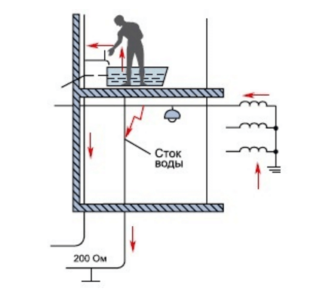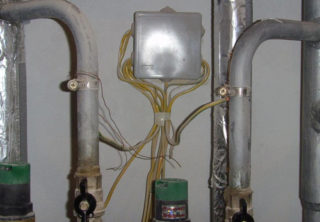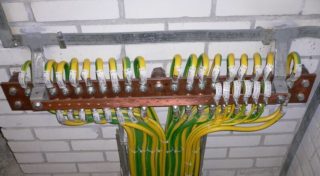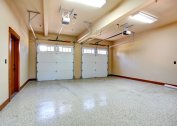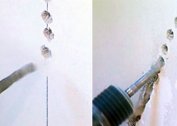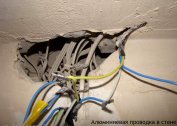By equalization or equalization of potentials is meant a decrease in the difference in electrical voltages between open parts of electrical equipment accessible to humans. It is applicable to such elements of protective systems as grounding N and PE conductors, as well as PEN type buses, which are also connected with metal jumpers for this purpose. The main purpose of this electrical procedure is to get rid of dangerous potential differences and prevent the possibility of electric shock to a person. In practice, this means that all conductive parts of the equipment on the consumer side, as well as structural elements used as grounding, are electrically connected to each other.
Types of Leveling Systems
The leveling systems used in electrical networks are divided into main and additional devices. To understand their differences, you will need to consider each of these approaches separately.
Main system
This kind of leveling constructions is abbreviated as OSUP. At its core, it is a circuit assembled from metal plates and integrating the following elements into a single whole:
- the main grounding bus (GZSh), designed to assemble all the elements to be grounded;
- metal fittings of a house or other structure;
- elements for protecting buildings from lightning and lightning;
- pipes and radiators;
- metal ducts for ventilation systems;
- water supply and sewage pipes.
Usually, a separate seat in the input distribution cabinet (ASU) is selected for the installation of the GZSH. In its absence, any metal assembly is used for this, from which a branch to the ground loop is made by means of a steel or copper strip.
Additional alignment
The bus for additional equalization of potentials ШДУП is a special steel structure mounted for the purpose of electrical connection of the following elements located in a damp room:
- shower enclosures and the bathtub itself;
- conductive parts of the ventilation system, if the entrance to the bathroom is decorated with a metal box;
- sewer pipes;
- unit body for drying towels;
- water pipes and radiators, as well as all other parts that need grounding.
For the bus for additional equalization of potentials, it will be necessary to equip a special cabinet or a metal box, from which copper conductors extend to each of the listed objects. Such a system is considered as auxiliary, that is, complementary to the OSUP. This explains the impossibility of their separate use and functioning.
Appointment and device ShDUP
An additional equalization system for electric potentials covers the following required elements:
- Without exception, all devices located in rooms of high humidity - in bathrooms, in kitchens, in basements and attics of private buildings - and are subject to grounding.
- Elements of metal structures directly adjacent to these rooms and beyond their planning boundaries.
- Zero conductors of the grounding system. All other leveling taps are connected to them.
In the absence of zero N conductors on this branch, the entire system is connected to the PE bus installed in the control cabinet at the entrance to the building.
This procedure also applies to heating tires of the “warm floor” system, which are tightly walled up in concrete coverings. Before their installation, it will be necessary to close the set of steel tubes with a metal mesh, which is subsequently connected to a system in which a bus is provided. To provide additional protection in the power supply circuits of heating devices, it is recommended to install an RCD for a current of up to 30 mA (see clause 7.1.88 of the electrical code).
The methods of connecting elements connected to the UD4 type UDB buses are very different. The following typical schemes are widely practiced:
- radial connection method to potential equalization elements;
- connection by a loop ensuring continuity of the leveling circuit.
In any case, such commutation is carried out using a special preassembled potential equalization unit - for this purpose, the ShDUP box is used. This design is a kind of assembly of several conductors into a single conductive system, connected to the zero bus of the distribution cabinet.
Parameters of conductors
For an additional potential equalization system, only conductors specially designed for this purpose are suitable. According to the provisions of the PUE (see paragraph 1.7.138), their characteristic dimensions must satisfy the following requirements:
- when connecting two own conductive parts of the equipment, the cross section of the smaller of the protective conductors connected to the grounded parts is selected as the main one;
- when connecting own and third-party conductive elements of equipment or devices, the basis is taken as a half of the cross-section of the protective conductor connected to the open part of the grounding circuit.
In accordance with paragraph 1.7.126. PUE protective conductors are made of the same material as the phase conductors, and their cross sections are strictly regulated.
The minimum cross-sectional values of copper conductors used in DCS systems and not included in the power cable must comply with the requirements of clause 1.7.127 of the EMP. The value of this parameter is selected based on the following considerations:
- it should be equal to 2.5 mm2 subject to reliable mechanical protection from deformation and other extraneous influences;
- its value reaches 4 mm2 in the absence of the necessary security.
In addition to all of the above, the general design of a safety control system includes elements of protection against lightning and lightning discharges.
Lightning protection function
Equalization of potentials in special constructions designed to protect structures from lightning strikes refers to serious measures that reduce the risk of fire at these facilities. In such systems, the dangerous potential difference formed due to the accumulation of charges of atmospheric electricity can reach huge values - up to 15 kV.
Their arrangement is similar to the cases already considered, except that an additional tap is made here, going to the grounding bus or lowering the lightning rod. The cross-sections of the connecting conductors are selected from the same calculation as for the general case of the OSUP device. According to the requirements of the EMP, not a single new electric network, which is necessarily equipped with lightning protection, will be taken into operation if it does not provide for artificial equalization of potentials.
Leveling bar mounting

SHDUP tires are usually placed in boxes that differ in the way they are installed on structural elements. They can be placed in the following places:
- in the cavities of adjacent wall walls;
- directly in the walls themselves.
In addition, they are often made in the form of wall mounts. Their installation and fixing in the elements of wall structures is provided at the construction stage.The specific location of the box with the bus is selected according to a pre-compiled scheme and taking into account that they have free access. This is necessary to monitor their condition and maintenance.
In an already constructed and operated building, boxes in open design are installed, available for the necessary electrical installation operations. The place of their installation is chosen so that the length of the assembly conductors and the grounding bus is minimal. This will save on consumables.
Arrangement of a reliable potential equalization system at any existing facility is a guarantee of protection for people working or living in it from electric shock.


